#tamara karsavina
Text

Russian ballerina Tamara Karsavina,Saint Petersburg (1907)
Photography by Alfred Eberling (1872-1951)
#Россия#photography#Russia#vintage#Санкт-Петербург#Saint Petersburg#русская балерина#russian ballerina#ballerina#Тамара Карсавина#Tamara Karsavina#русский балет#russian ballet#ballet#beauty#русская культура#russian culture#culture#Europe#русский фотограф#russian photographer#photographer#Альфред Эберлинг#Alfred Eberling#history#russian#european#black and white#1907#1900s
354 notes
·
View notes
Text

Auguste Bert :: Le spectre de la rose [Tamara Karsavina dans le rôle de la jeune fille], Théâtre de Monte-Carlo, 19-04-1911.
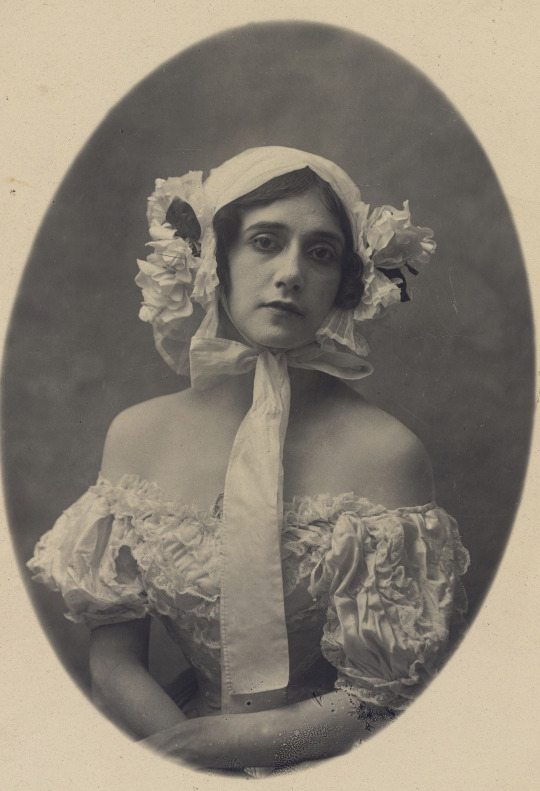
Auguste Bert :: Le spectre de la rose [Tamara Karsavina dans le rôle de la jeune fille], Théâtre de Monte-Carlo, 19-04-1911.Le spectre de la rose : tableau chorégraphique / chorégraphie de Michel Fokine. | src Gallica ~ BnF
view on wordPress
#tamara karsavina#auguste bert#ballets russes#role portrait#le spectre de la rose#dance costume#tanzkostum#dancer#Tänzerin#danseuse#danzatrice#bailarina#headgear#jeune fille#Rollenporträt#rollenportrat#charachterization#a. bert#1910s
101 notes
·
View notes
Photo

Ballerina Tamara Karsavina on the cover of a magazine
34 notes
·
View notes
Text
E.O. Hoppé, Tamara Karsavina, "Scheherezade" 1912
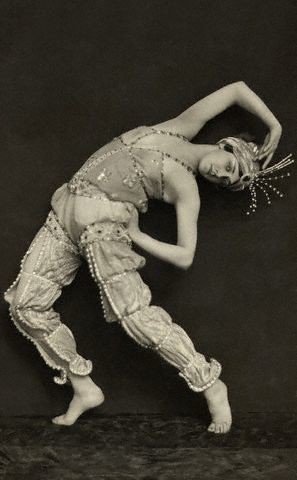
England --- Ballet dancer Tamara Karsavina in "Scheherezade". --- Image by © E.O. Hoppé/CORBIS
2 notes
·
View notes
Text
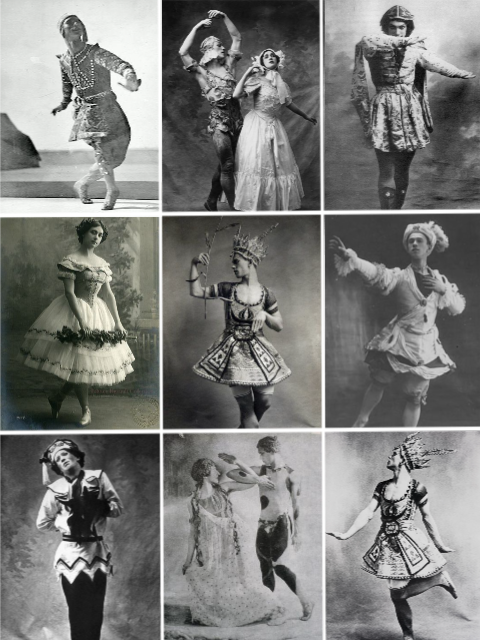
#moodboard#history#ballet russes#ballet#ballet history#vaslav nijinsky#Bronislava Nijinska#Ballet dancer#Tamara Karsavina
13 notes
·
View notes
Text

#ballets russes#breaking bad#those are two tags ive never expected to use in the same post btw#sergei diaghlev#vaslav nijinsky#tamara karsavina#igor stravinsky#i dont remember the name of the rest of the folks in this pic#walter white#jesse pinkman#im unemployed
14 notes
·
View notes
Photo
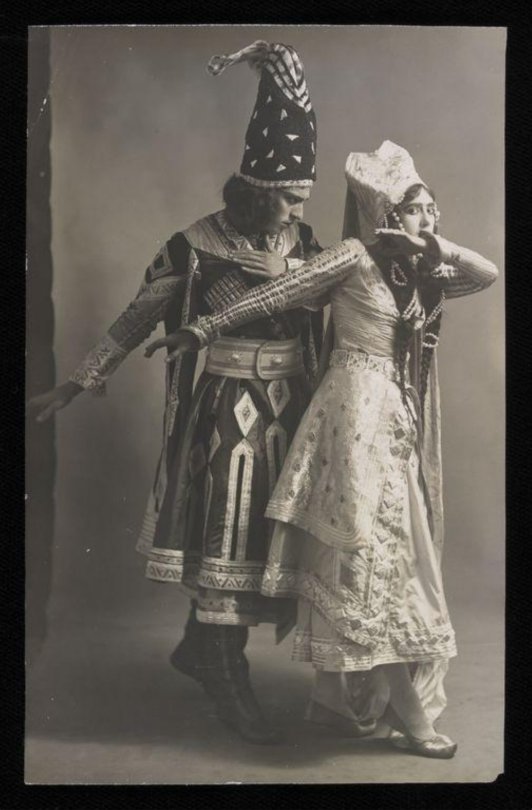
Photograph by Waléry of Tamara Karsavina and Adolph Bolm in Thamar, performed by Serge Diaghilev's Ballets Russes, May 1912
source: V&A
1 note
·
View note
Text
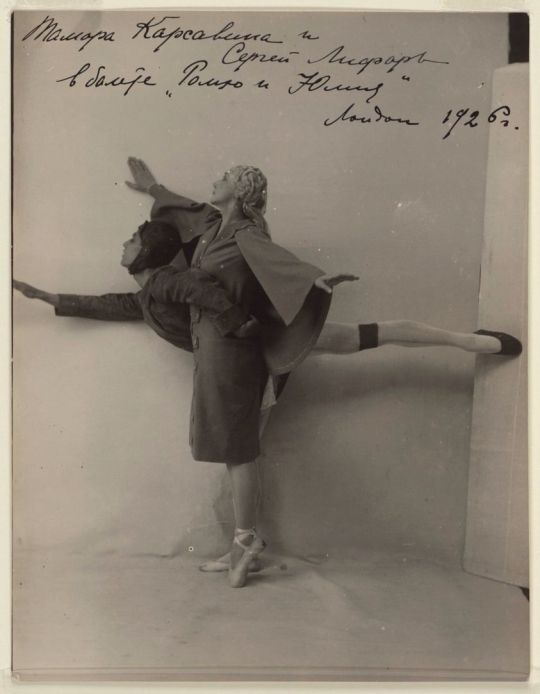
Man Ray, Tamara Karsavina and Serge Lifar, Romeo and Juliet, 1926
1 note
·
View note
Text

Tamara Karsavina as Columbine in 'Le Carnival,' London, 1912.
©E.O. Hoppé Estate Collection.
#tamara karsavina#ballets russes#ballerina#dancer#costume#columbine#diva pose#e o hoppe#sergei diaghilev
1 note
·
View note
Text
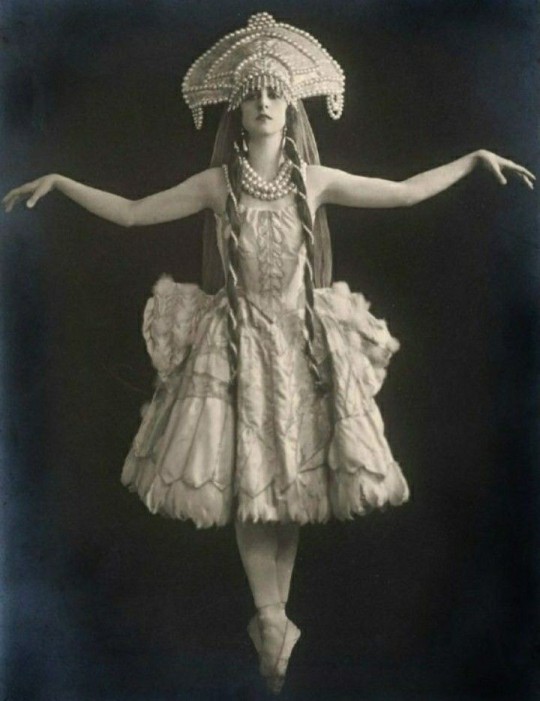
Tamara Platonovna Karsavina | Тамара Платоновна Карсавина
Born March 10th 1885 & Died May 26th 1978, Tamara was a prima ballerina not only of the Imperial Russian Ballet but also Ballets Russes.
#Tamara Platonovna Karsavina#Тамара Платоновна Карсавина#russian empire#ballet#prima ballerina#russian history#russian culture#balletcore#russian ballet#russian art#holy queue#ballerina#Imperial Russian Ballet#Ballets Russes#dance history
216 notes
·
View notes
Text
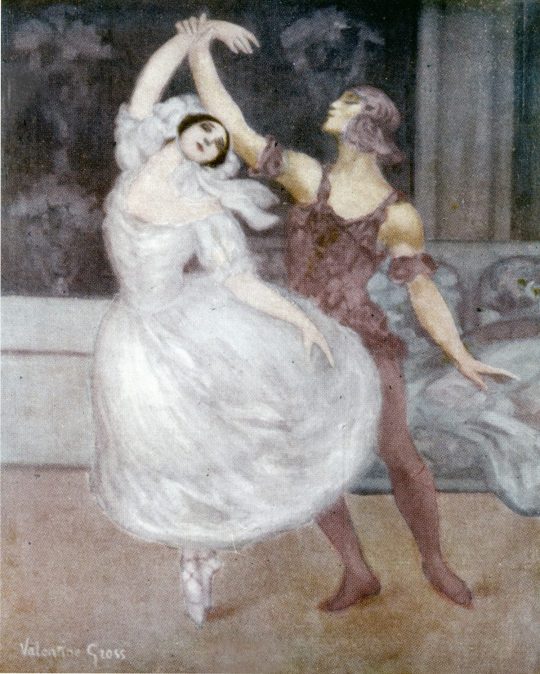
Valentine Hugo, Vaslav Nijinsky et Tamara Karsavina dans
13 notes
·
View notes
Text

Russian ballerina Tamara Karsavina (1907)
Photography by Alfred Eberling (1872-1951)
#Россия#Russia#vintage#photography#Санкт-Петербург#Saint Petersburg#русская балерина#russian ballerina#ballerina#Тамара Карсавина#Tamara Karsavina#русский балет#russian ballet#ballet#Europe#beauty#history#russian#european#black and white#vintage photography#1900s#20th century
35 notes
·
View notes
Text
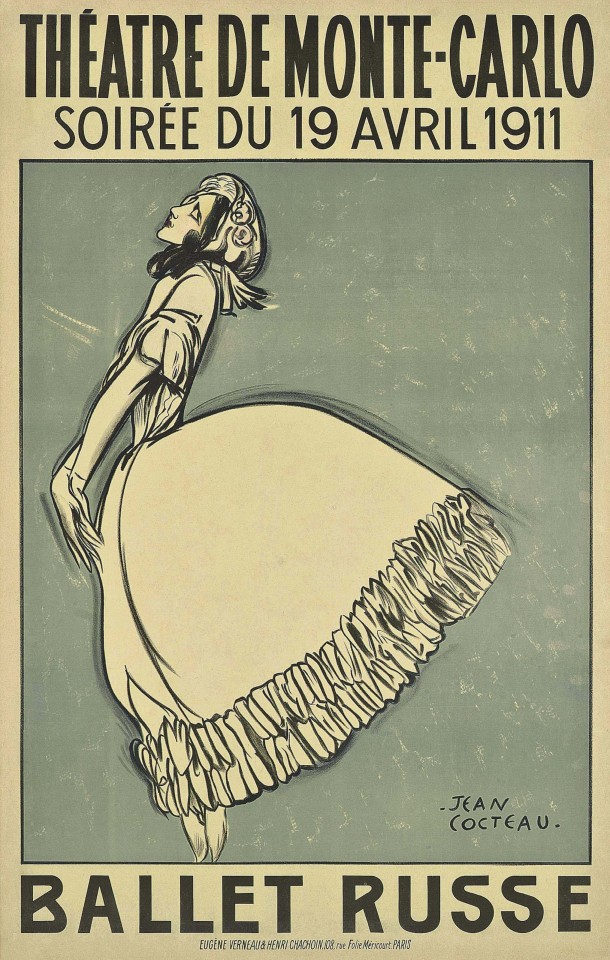
Jean Cocteau (1889-1963)
THÉATRE DE MONTE-CARLO, BALLET RUSSE [Karsavina]
Lithograph in colours, 1911, printed by Eugène Verneau & Henri Chachoin, Paris | src Christie's
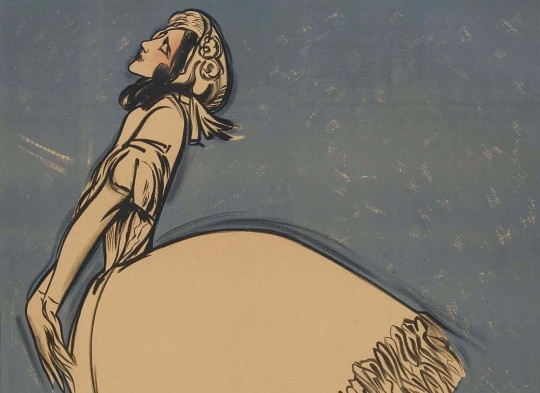
view more on wordPress

Jean Cocteau (1889-1963) :: Théatre de Monte-Carlo; Ballet Russe; [Karsavina], 1911. Lithographic poster in colors on wove paper, printed by Eugène Verneau & Henri Chachoin, Paris. Severin Wunderman Family Museum | src Bonhams
view more on wordPress
#jean cocteau#ballets russes#tamara karsavina#illustration#poster#danseuse#danzatrice#tänzerin#bailarina#1910s#ballet company#diaghilev ballets russes#poster design
109 notes
·
View notes
Text
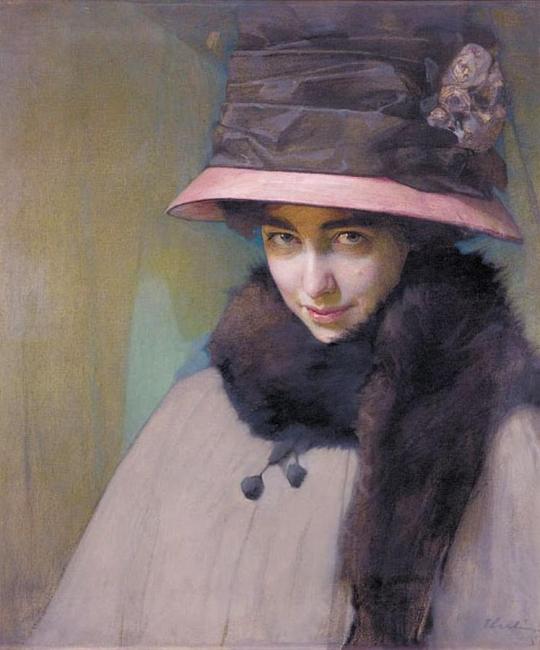
Alfred Eberling - Portrait of Ballerina Tamara Karsavina (1911)
231 notes
·
View notes
Note
What's a ballet with real snazzy costume work, in your humble and/or professional opinion? c:
Oh, you’ve activated my trap card - asking about costume design and ballet and not expecting me to barf up the entirety of my PhD. I’ve also done work on the ballet blancs costumes (Giselle and La Sylphide specifically) but they are interesting on a theoretical level and not so much visually, so I’ll skip that.
So here are some personal favs of mine - the highlights, if you will. Caveat: long post, and mostly limited to the work of the Ballets Russes, because they are my longtime obsession and I think (and have argued) for their role in fundamentally changing stage and costume design (to say nothing of dance, and George Balanchine can sit the fuck down). I didn’t put that in my thesis but I wanted to.
Anyway tldr in the first decade of the 20th century a troupe of dancers from the Russian Imperial Ballet (later the Mariinsky) travelled through Europe under impresario Serge Diaghilev, for what became known as the Saisons Russes, or Russian Seasons. They performed both opera and ballet, and are probably best remembered today (if at all) as the troupe that danced the premier of Stravinsky’s Rite of Spring and caused a riot at the Theatre des Champs Elysées. The eminent artists that worked with them include Debussy, Cocteau, Picasso, Chanel - and these are only a few recognisable names. But my focus was primarily on the Russian roots of the ballet, in their visual language and presentation of gender and nationality, more precisely around the work of artist Leon Bakst and dancer Vaslav Nijinsky.
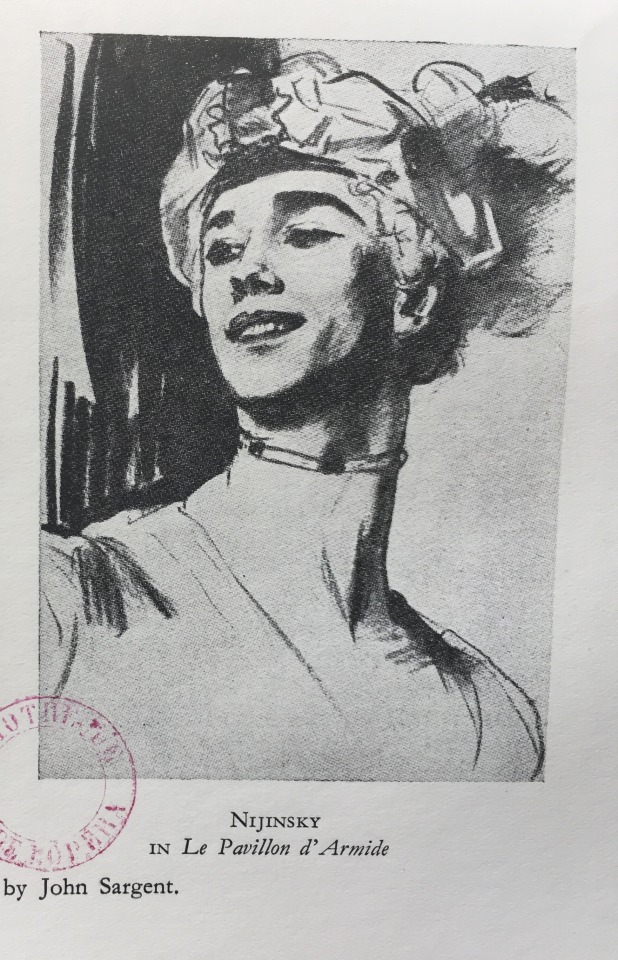
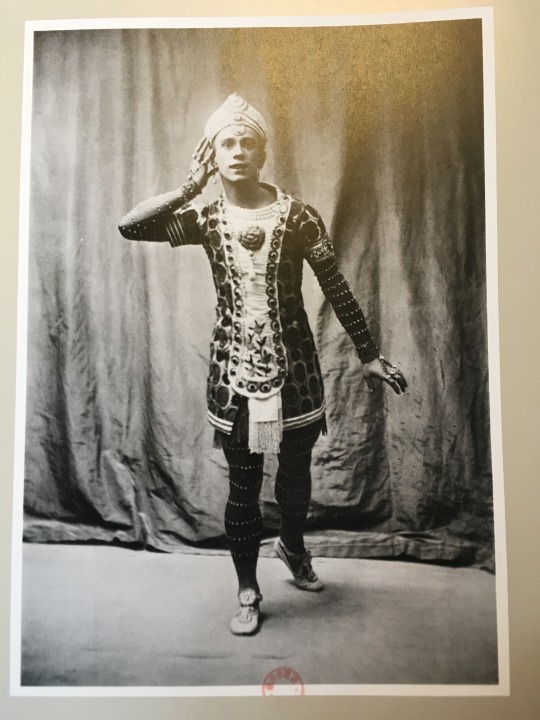
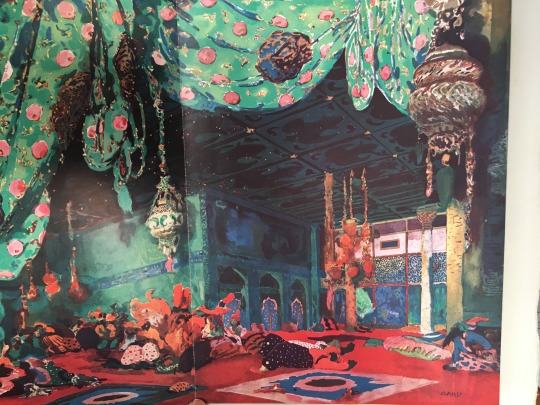
Second image of Nijinsky from Le Dieu Bleu, and Bakst’s set design from Scheherazade (1911). These are mainly photos and scans I have from the year I spent in the archives of the Palais Garnier (the Paris Opera) where all the good stuff is.
The crux of why these costumes are insanely interesting to me is because they are very specific to their time - they are a product of a resurgence in nationalist interests in Russian art (Diaghilev ran Mir Isskustva and worked with Savva Mamontov before he organised the BR) as well as a carefully crafted, highly artificial presentation of Otherness, expressly destined for export to the west. French audiences in the first decade of the 20th century (because there is a stark cut-off at the beginning of WW1) still had an appetite for Orientalism, despite their flagging colonial power. What the Russians brought them was compelling mix of performative Orientalism just vague enough to be appealing and fantastical, visually intriguing, and refreshing to a society that had otherwise come to recognise itself as decadent, fallen “victim” to modernity. In the athletic virtuosity of Russian bodies, Bakst’s exotic visual language and the soaring music of Rimsky-Korsakov and Stravinsky, the French devoured what they deemed a sort of noble savagery (yes, that kind). Despite the oversaturation of Orientalism in painting throughout the 19th century, the French identified a kind of masculine vigour and freedom in these live performances they found they themselves lacked, and longed for. Primitivism, as demonstrated in myriad ways by the BR, was for them a way to reconnect with a virility that they felt modernity had stolen, or at the very least, weakened. If you think this sounds eerily akin to the discourse around mounting desire for war to “cleanse” or “reset” Europe during that same period, you are right.
A few of Bakst’s lesser known designs from the archive, for context (including a reprod by Barbier which I don’t have the OG of but is saved in my Bakst folder so please take my word for it). I have a thousand more of these but tumblr has an image limit per post 😤

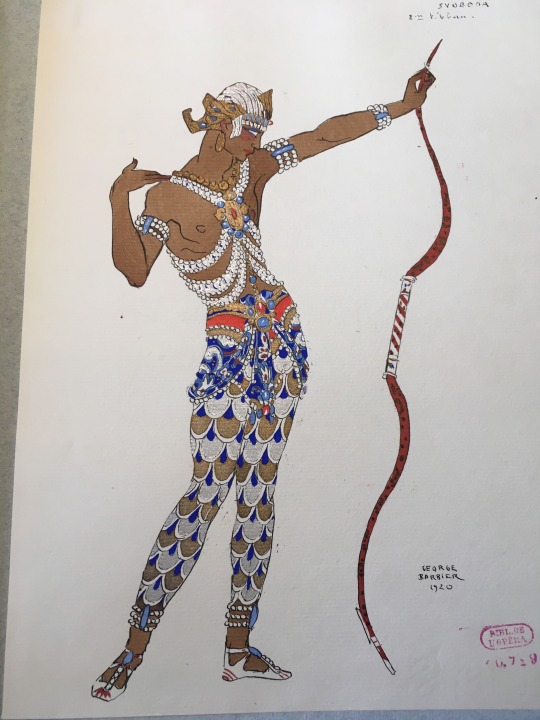

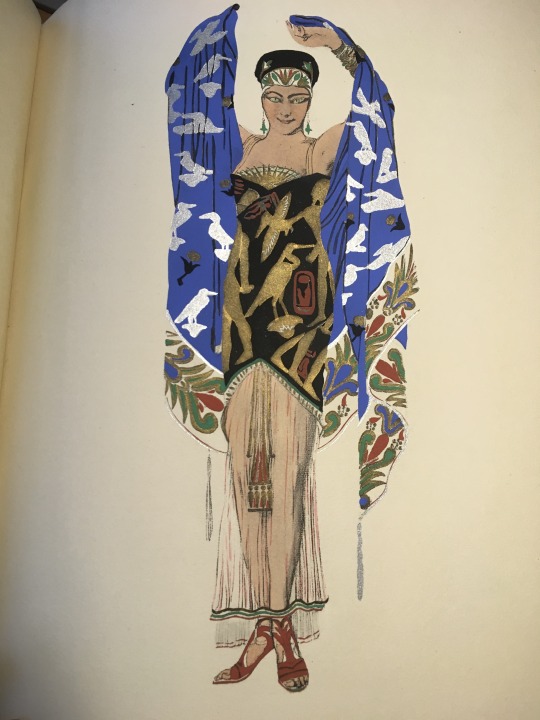

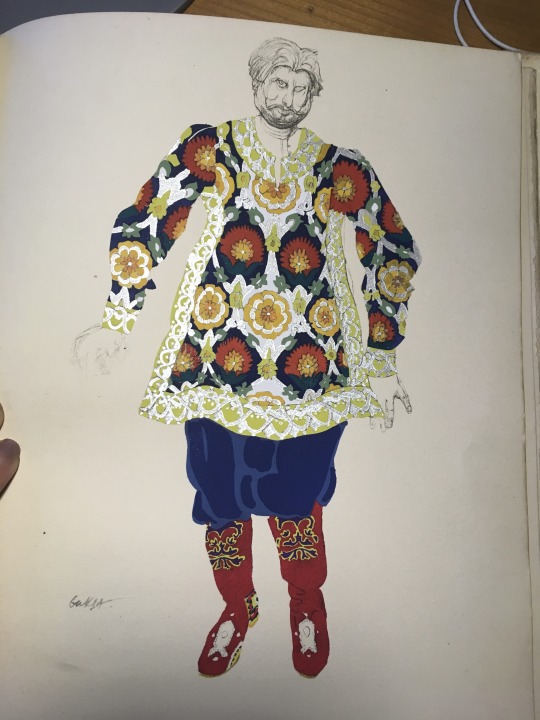
Tamara Karsavina, who often performed with Nijinsky, and one of my most beloved historical figures. The existence of a strong classical ballet cirruculumin the UK today is in part thanks to her.

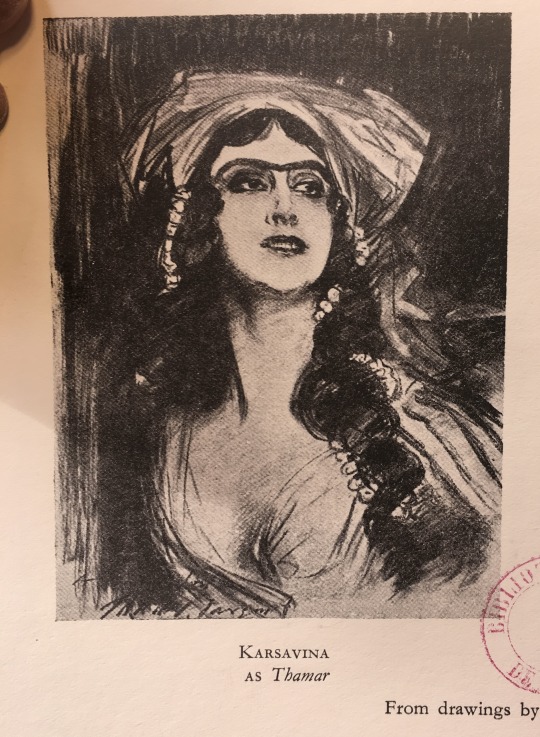
One of her most famous roles, as the Firebird:
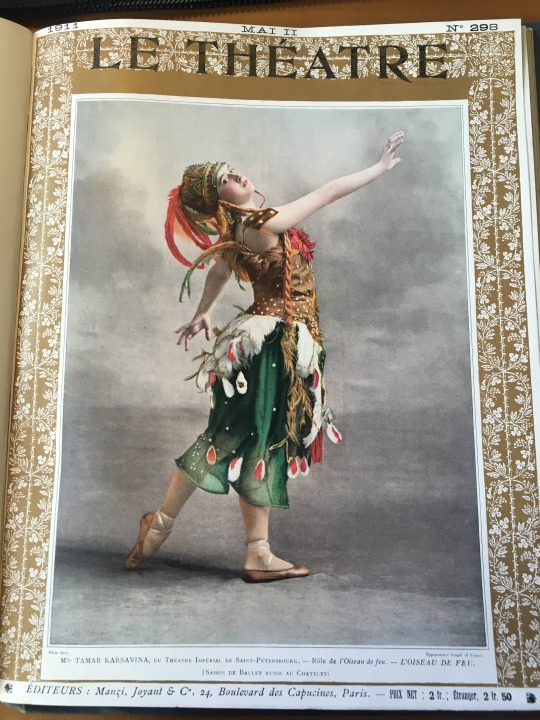
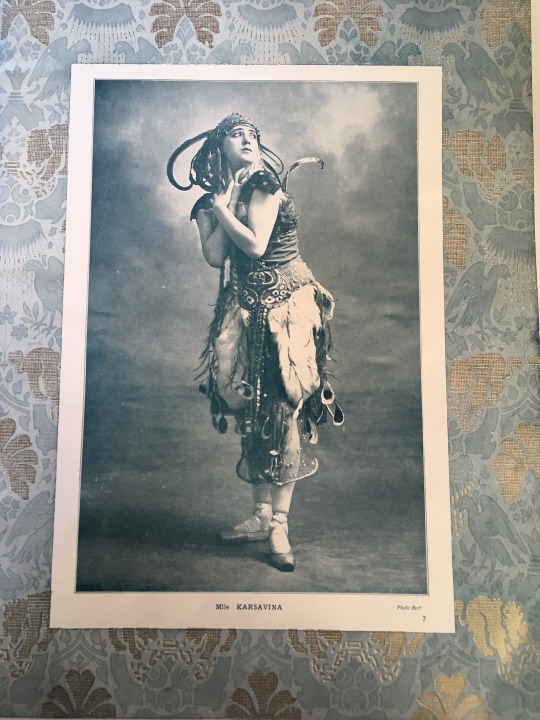
Nijinsky is by far the most interesting figure to come out of the BR. He combined virtuosity and strength (that most audiences identified as masculine) with a glittering, joyful, and expressive queerness on stage (and off). Some of his greatest roles are expressly feminine in their costume design: Le Spectre de La Rose, for example.
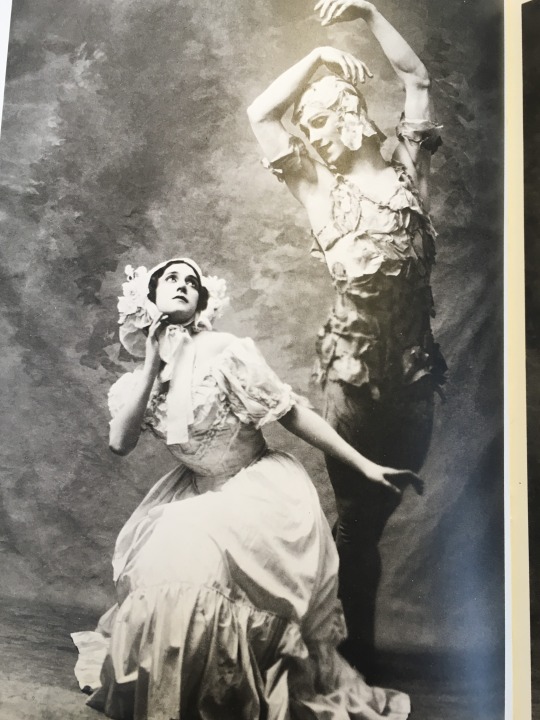
There’s a colorised version of this out there where you can see every pink rose petal on him.
While others are much more decorative but still markedly Orientalist (or Russian-Orientalist): Le Dieu Bleu, La Peri, Les Orientales, L’Oiseaux de Feu.

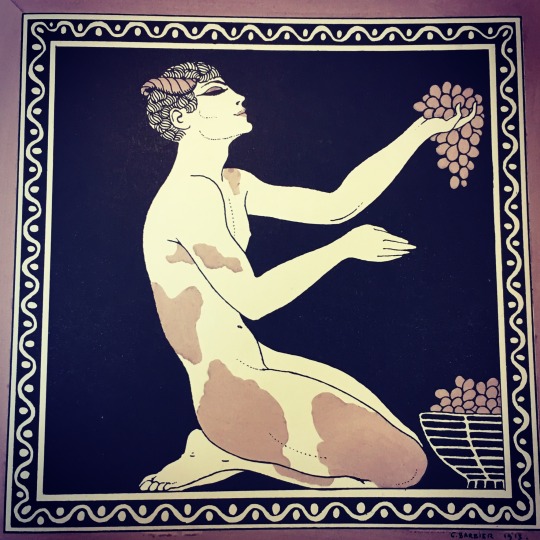
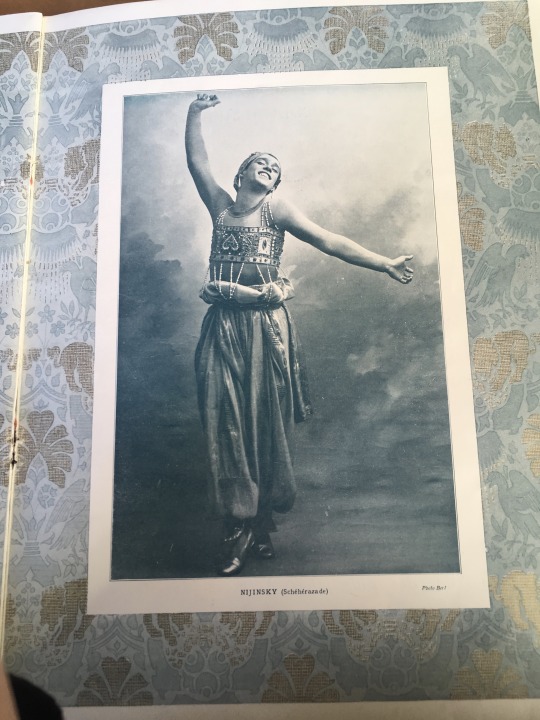

This last image above is not, the last I saw it, in a private collection. It hangs above the vestibule of the Palais Garnier archives (also Napoleon’s private hangout room) where it faces the sort of “diptych” version that features Karsavina, and on occasion I would stand below them and weep quietly).
Either way, there is an argument to be made about Nijinsky’s physicality and, more importantly nationality as a kind of avenue of permission through which the French could admire both his beauty and athleticism and even, to a degree, imagine themselves in his place while still maintaining that safe distance of Otherness.
But I would argue that his greatest role was the Golden Slave in Scheherazade, a wild, erotic orientalist fantasy that has little to nothing to do with the actual tale of Scheherazade. In it, Nijinsky - bejewelled, wild, ecstatic, (and yeah often in blackface) - cavorts with Zobeide, the Sultan’s favourite, in a very sexually explicit storyline. Both characters are equally decorative in their costumes, and both, in real life, were recognisably queer(ed) figures. It’s Scheherazade in particular that helped accelerate an obsessive trend in fashion (Paul Poiret was at the centre) for Orientalist design. Bakst himself did some silhouettes that are hard to distinguish from his costume design, and through the remarkable illustrations by Paul Iribe, Georges Lepape and Georges Barbier, we can see some of the blatant repetition of motif and silhouette in these ensembles that are designed, among other things, to be worn to the theatre.
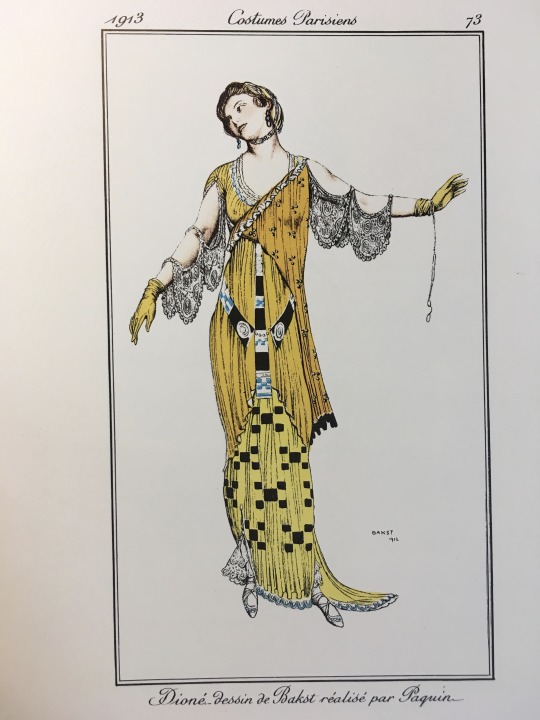
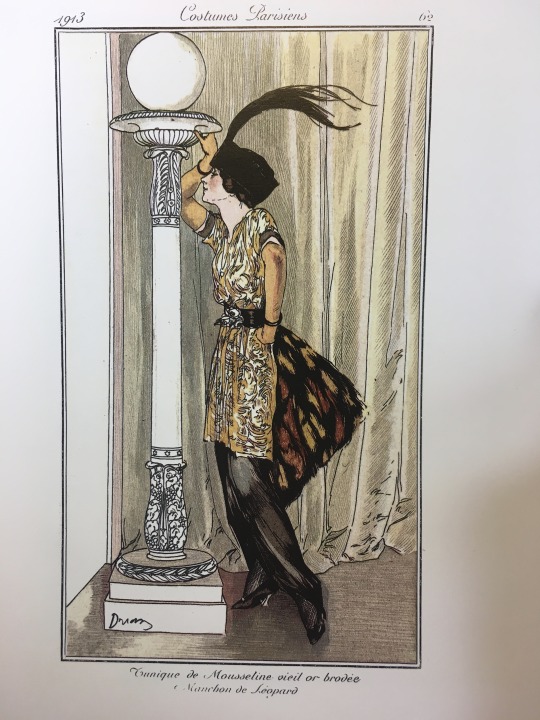
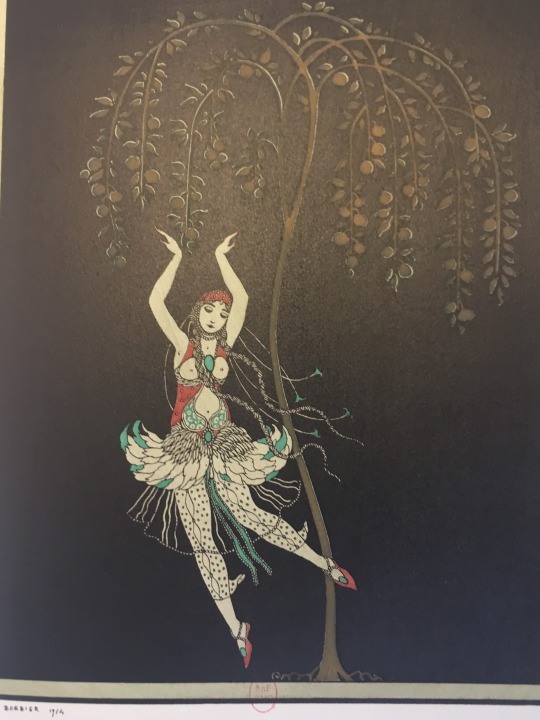
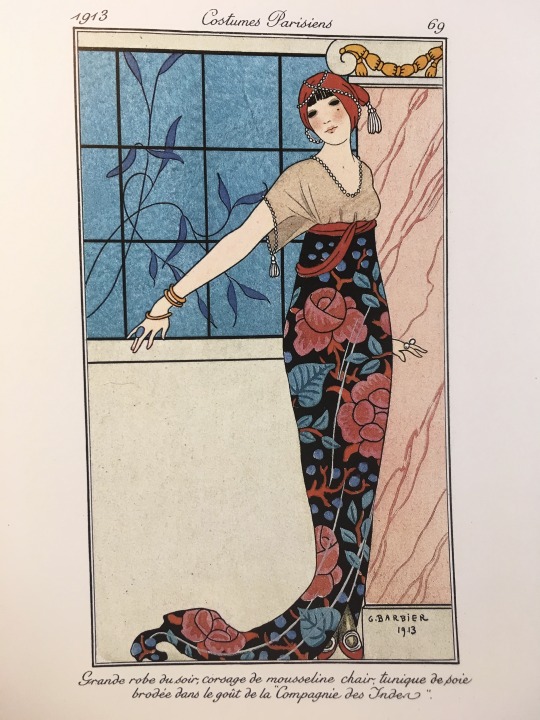
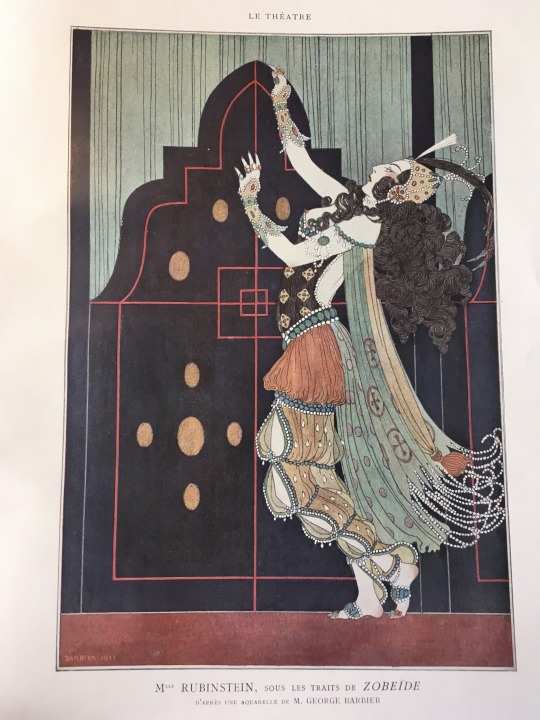
3rd and 5th are depictions of costumes of the Firebird and Zobeide respectively; the rest are fashion plates. This doesn’t even include the lampshade dress - which I don’t have a handy picture of, but have seen in real life - that is a pretty blatant melange of the Firebird and Zobeide, as designed by Poiret. Below is one of my favourite examples: A woman in a lampshade-style dress, standing against a backdrop not unlike Bakst’s set design above, attended by a archetypal oriental servant wearing Nijinsky’s Golden Slave costume.
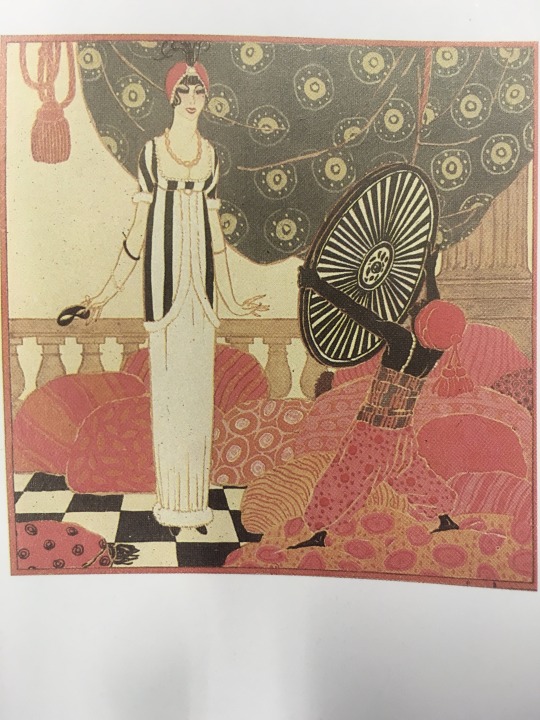
These motifs also proliferated in advertisements and in all kinds of other consumer products (perfumes, for example, and decorative objects). Thus, there’s a performative aim in wearing these designs that I read as a sort of pseudo-kinetic empathy (and can funnnily enough probably be compared to cosplay). There is an attempt here to channel what is being presented onstage, to reenact it, to physically embody it, in the way that fashion is, at its core, a tool through which to construct identity. That the French pulled inspiration from an openly queer man leaping across the stage dripping in jewels, and from femme fatal-style odalisques, says a lot about the visual and cultural impact the BR had on the theatre-going public at the time.
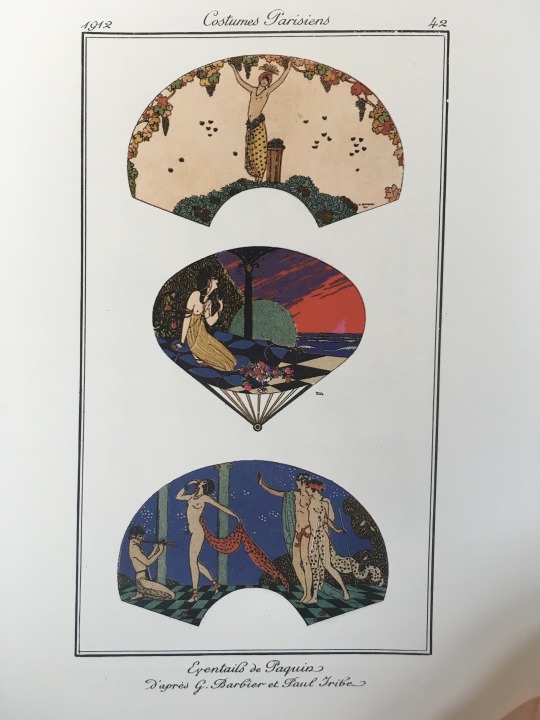
You can see in these fan designs by Paquin some pretty obvious references to the BR aesthetic: L’apres-midi d’un faune, Daphnis et Chloe, Scheherazade, even a little Le Pavillon d’Armide in that first one.
Nijinsky was not the only one to queer the stage: despite not being a dancer trained to the level of the BR troupe, Ida Rubinstein, no doubt purposefully channelling Sarah Bernhardt, was also a beloved stage presence, whether as the sly harem favourite Zobeide or as the strikingly androgynous St Sebastian, gayest of saints.

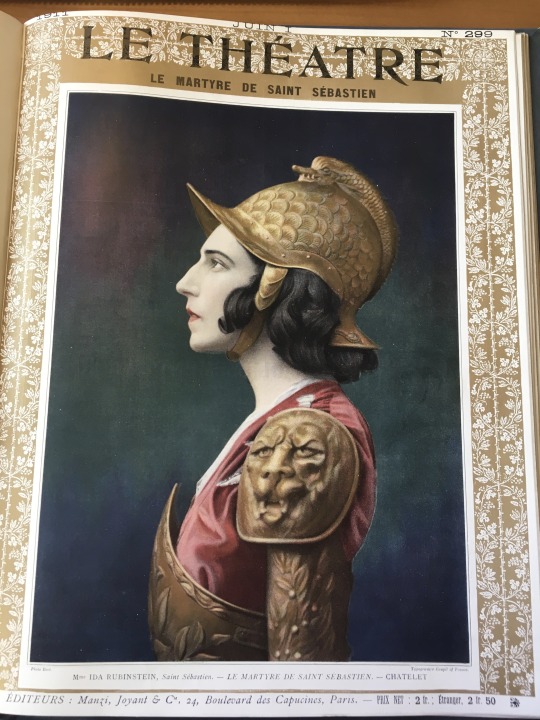
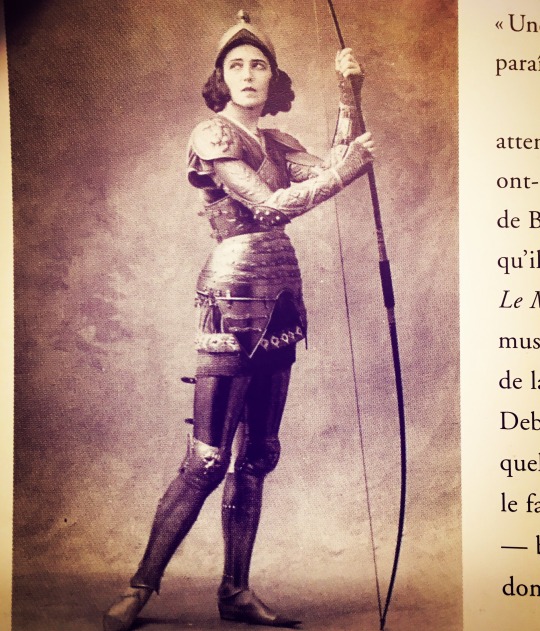
This is not to say there haven’t been wonderful and brilliant costume designs since - and quite a few known fashion designers working alongside dance companies, to great success or otherwise. I will, however, shoutout my favourite contemporary work: Akram Khan’s Giselle, which has everything and yet nothing to do with Adolph Adam’s 1842 piece. I don’t even want to post pictures because the costumes of the nobles (the landowners, in this very apocalyptically late-stage capitalist version) are so fucking breathtaking in relation to the overall design, and their entrance itself is probably one of the most spectacular parts of the ballet, that all I can say is just see it. Or buy the dvd. What Khan does gesturally is beyond words, what Vincenzo Lamagna does with Adam’s original score is visceral and haunting and churns my insides. I make a point to see it live at least once a season when it’s touring with the ENB, and I will do so until it leaves the repertory or until I die. It’s my contemporary Scheherazade. It’s a gesamtkunstwerk.
Tldr Leon Bakst is one of the greatest costume designers of the 19th and 20th century and criminally underrated.
It’s not ballet, and it’s not the sumptuous costumes from Boris Godunov, but as a bonus here’s my favourite image of opera star Fedor Chaliapine as Ivan the Terrible.
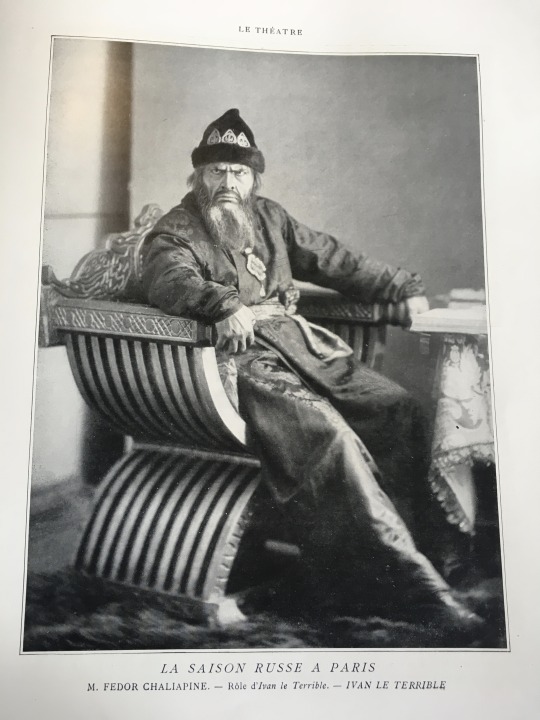
#Thank you for the enclosure enrichment#And for coming to the tldr of my thesis#ballets russes#vaslav nijinsky#Leon bakst#fashion design#academic indulgence hour#Art history
46 notes
·
View notes
Text
THIS DAY IN GAY HISTORY
based on: The White Crane Institute's 'Gay Wisdom', Gay Birthdays, Gay For Today, Famous GLBT, glbt-Gay Encylopedia, Today in Gay History, Wikipedia, and more … March 31
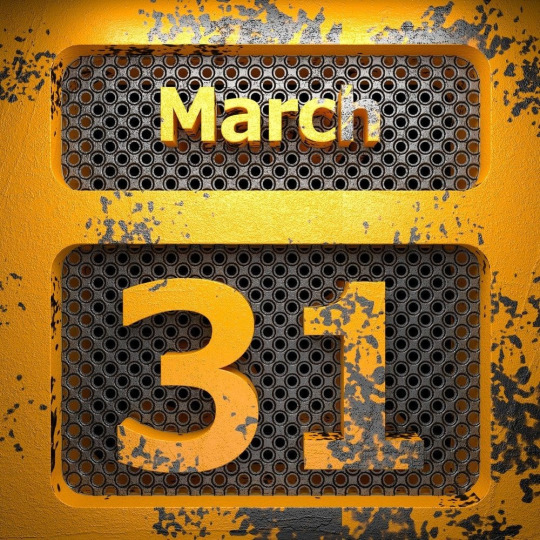


1872 – On this date the Russian choreographer Sergei Diaghilev was born (d.1929). A Russian art critic, patron, ballet impresario and founder of the Ballets Russes from which many famous dancers and choreographers would later arise.
Diaghilev engaged in a number of homosexual relationships. His first important affair was with Dima Filosofov, his cousin, when they were both little more than adolescents; his second with Vaslav Nijinsky, who had already had a homosexual liaison with a wealthy aristocrat, partly in order to help support his mother, sister, and mentally disabled brother (his father had deserted the family). Later affairs of Diaghilev were with Boris Kochno, who served as his secretary from 1921 until the end of his life, and with Anton Dolin, the American dancer. Diaghilev had a close platonic relationship with two women, Misia Sert and the dancer Tamara Karsavina, either of whom he said he would like to have married
One cannot underestimate the influence of Diaghilev's Ballets Russes on the development of 20th century art. But the importance of his sexuality to Diaghelev's creative art is sometimes overlooked. Had he not been a gay man, had he not attracted to his cause the great gay writers, dancers, and artists of the day, the stream of 20th century art may have flowed in an entirely different direction. As Martin Green wrote in Children of the Sun,
"He made the dancer Nijinsky first his lover and then his choreographer, slyly displacing Michel Fokine and inspiring Nijinsky to become the company's chief ballet-creator. Diaghilev's superb taste...was made manifest in this new Nijinksy, the choreographer, and in the ballets he created. These works of art were the children of Diaghilev's sexual passion. The same thing happened later with Leonide Massine and Serge Lifar...These men created ballets under the spell of Diaghilev's passion and he created through them."


1934 – Richard Chamberlain, American actor, born; an American actor of stage and screen who became a teen idol in the title role of the television show Dr. Kildare (1961-1966) and the miniseries The Thornbirds.
Born in Los Angeles, he decided to pursue acting as a career. However, he was drafted into the army for two years, but enrolled in acting classes on his release, where he met his first same-sex love - but fearing the attitudes of the time, the late 1950s, the pair kept their year-long affair secret.
He appeared in his first film in 1960, and the following year won the title role in TV drama Dr Kildare, which ran for five successful years and made Chamberlain a household name and a romantic idol.
He made a number of successful and critically acclaimed movies in the 1970s - Ken Russell's The Music Lovers (1971), proto disaster epic The Towering Inferno (1974), The Swarm (1974) and The Three Musketeers (1974). In the late-70s and 1980s Chamberlain returned to TV and his career thrived in the then-new mini-series genre - Centennial (1978), Shogun (1980) and his best known role as Father Ralph de Bricassart in Colleen McCullough's The Thorn Birds (1983) - a TV phenonemon at the time. When the mini-series fell out of favour, he returned to the theatre where he continues to work.
Chamberlain was romantically involved with television actor Wesley Eure in the early 1970s. In 1977, he met actor-writer-producer Martin Rabbett, with whom he began a long-term relationship. This led to a civil union in the state of Hawaii, where the couple resided from 1986 to 2010 and during which time Chamberlain legally adopted Rabbett to protect his future estate. Rabbett and Chamberlain starred together in, among others, Allan Quatermain and the Lost City of Gold, in which they played brothers Allan and Robeson Quatermain. In the spring of 2010 Chamberlain returned to Los Angeles to pursue career opportunities, leaving Rabbett in Hawaii, at least temporarily.
Chamberlain was outed, at the age of 55, by the French women's magazine Nous Deux in December 1989, but it was not until 2003 that he confirmed his homosexuality, in his autobiography, Shattered Love which describes how he felt obliged to hide his sexuality in order to have an acting career, and detailed affairs with dancer Rudolph Nureyev and actor Anthony Perkins.
Since his coming out Chamberlain has made occasional guest appearances on TV shows such as Will & Grace, Nip/Tuck and Desperate Housewives, usually bringing a new knowingness or just playing gay as he was unable to do for so many years.
In an interview with The Advocate in 2010 promoting his role in ABC's Brothers & Sisters Chamberlain controversially said,
'For an actor to be working [at all] is a kind of miracle, because most actors aren't, so it's just silly for a working actor to say, "Oh, I don't care if anybody knows I'm gay" - especially if you're a leading man.
'Personally, I wouldn't advise a gay leading man-type actor to come out.'


1961 – American composer and pianist Jake Heggie celebrates his birthday today. Born in West Palm Beach, Florida. Heggie is the composer of the operas Dead Man Walking (2000), The End of the Affair (2004), At The Statue of Venus (2005), and To Hell and Back (2006). He is also the composer of more than 200 art songs as well as chamber and concert works.
Heggie started learning the piano when he was five years old. After spending two years in Paris, he continued his studies at the age of 20 at the University of California, Los Angeles, with the pianist Johana Harris (1912-1995), widow of the composer Roy Harris. They married in 1982 and separated in 1993.
In 1998 he was appointed composer in residence to the San Francisco Opera, where his first opera, Dead Man Walking, was first performed in 2000. With a libretto by Terrence McNally and a production by director Joe Mantello, the opera was extensively acclaimed and it ran for two extra performances due to popularity. It has since been seen in 15 international productions. In 2007 alone, Dead Man Walking received more than 50 performances. His second opera, The End of the Affair, was premiered in 2004 at the Houston Grand Opera.
In 2005, Heggie collaborated again with Terrence McNally to create At the Statue of Venus, which opened in Denver. In 2006, he debuted To Hell and Back (libretto by Gene Scheer) in November 2006.
On 29 February 2008, his opera Last Acts, with a libretto by Gene Scheer based on a play by Terrence McNally, opened at the Houston Grand Opera, which commissioned the work in association with the San Francisco Opera and Cal Performances. Last Acts was its working title; it will in future be known as Three Decembers.
On April 30, 2010, Heggie premiered his most recent opera, Moby-Dick (libretto by Gene Scheer) at The Dallas Opera.
Heggie married his partner of eight years, singer aand actor Curt Branom, in October 2008.


1963 – Laurent Daniels, born Laurent Peter Holzamer in Mainz, is a German actor who lives in Berlin.
He is the grandson of former ZDF - director Karl Holzamer.
In 1991, he and David Wilms presented the gay magazine Andersrum, which was broadcast on the local Berlin broadcaster FAB.
From 1997 to 2000 Daniels played the role of homosexual Philip Krüger in Good Times, Bad Times. He also played in the spin-off Großstadtträume in 2000 and tried his hand at singing for a while.
From August 21, 2006 to February 10, 2007 he played the role of Volker Möllenkamp in the telenovela Butterflies in the Belly. In 2007 he appeared in the last episode of Adelheid and her murderers ( Mord à la mode ).
In 2014 he stood in front of the camera for the German production Plan B: Scheiss auf Plan A , which opened in German cinemas on June 8, 2017.

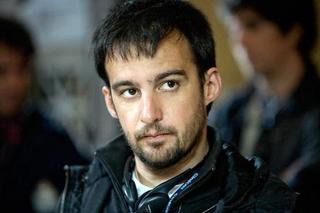
1972 – Spanish filmmaker Alejandro Amenábar was born in Santiago, Chile. In addition to writing and directing his own films, Amenábar has maintained a notable career as a composer of film scores, including the Goya Awards-nominated score for José Luis Cuerda's La lengua de las mariposas.
Amenábar was awarded the Grand Prix of the Jury at the International Venice Film Festival in 2004 for Mar adentro ("The Sea Inside") starring Javier Bardem, and in February 2005 the same film won the Academy Award for Best Foreign Language Film.
In February 2004, Amenábar came out to the Spanish gay magazine Shangay Express.
In 2008 Amenábar shot an epic film called Agora which he wrote with Mateo Gill. Set in Roman Egypt, the film is based on the life of philosopher and mathematician Hypatia of Alexandria.
On 18 July 2015, he married David Blanco.


2014 – Model and activist Geena Rocero comes out as transgender during her TED talk filmed in Vancouver on the Transgender Day of Visibility. She is a Filipino American supermodel, TED speaker, and transgender advocate based in New York City. Rocero is the founder of Gender Proud, an advocacy and aid organization that stands up for the right of transgender people worldwide to gain "self-identify with the fewest possible barriers".


TODAY'S GAY WISDOM
Edward FitzGerald's translation of The Rubaiyat of Omar Khayyam, verses 1 - 12 (of 75):
1
Awake! for Morning in the Bowl of Night
Has flung the Stone that puts the Stars to Flight:
And Lo! the Hunter of the East has caught
The Sultan's Turret in a Noose of Light.
2
Dreaming when Dawn's Left Hand was in the Sky
I heard a Voice within the Tavern cry,
Awake, my Little ones, and fill the Cup
Before Life's Liquor in its Cup be dry.
3
And, as the Cock crew, those who stood before
The Tavern shouted--Open then the Door.
You know how little while we have to stay,
And, once departed, may return no more.
4
Now the New Year reviving old Desires,
The thoughtful Soul to Solitude retires,
Where the WHITE HAND OF MOSES on the Bough
Puts out, and Jesus from the Ground suspires.
5
Iram indeed is gone with all its Rose,
And Jamshyd's Sev'n-ring'd Cup where no one knows;
But still the Vine her ancient Ruby yields,
And still a Garden by the Water blows.
6
And David's Lips are lock't; but in divine
High piping Pelevi, with Wine! Wine! Wine!
Red Wine!--the Nightingale cries to the Rose
That yellow Cheek of hers to'incarnadine.
7
Come, fill the Cup, and in the Fire of Spring
The Winter Garment of Repentance fling:
The Bird of Time has but a little way
To fly--and Lo! the Bird is on the Wing.
8
And look--a thousand Blossoms with the Day
Woke--and a thousand scatter'd into Clay:
And this first Summer Month that brings the Rose
Shall take Jamshyd and Kaikobad away.
9
But come with old Khayyam, and leave the Lot
Of Kaikobad and Kaikhosru forgot:
Let Rustum lay about him as he will,
Or Hatim Tai cry Supper--heed them not.
10
With me along some Strip of Herbage strown
That just divides the desert from the sown,
Where name of Slave and Sultan scarce is known,
And pity Sultan Mahmud on his Throne.
11
Here with a Loaf of Bread beneath the Bough,
A Flask of Wine, a Book of Verse--and Thou
Beside me singing in the Wilderness--
And Wilderness is Paradise enow.
12
How sweet is mortal Sovranty!--think some:
Others--How blest the Paradise to come!
Ah, take the Cash in hand and waive the Rest;
Oh, the brave Music of a distant Drum!


11 notes
·
View notes